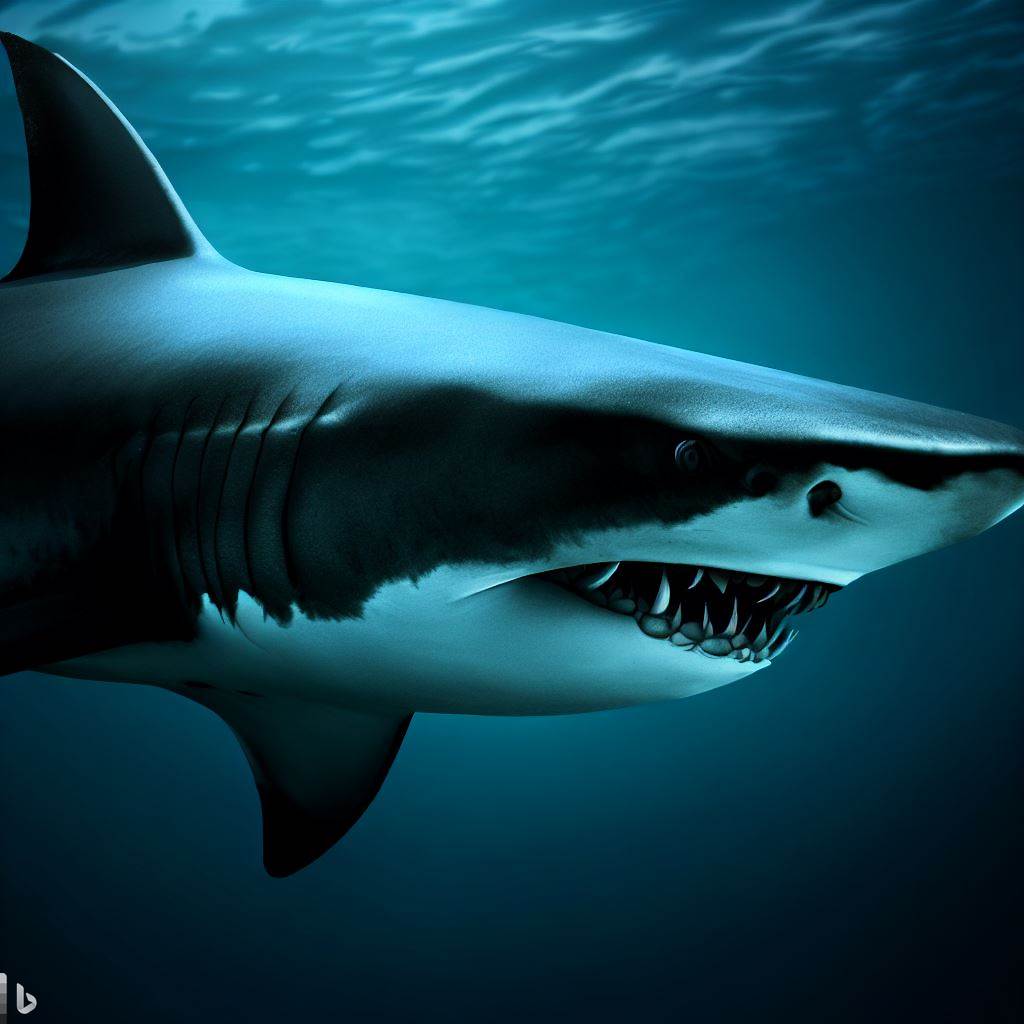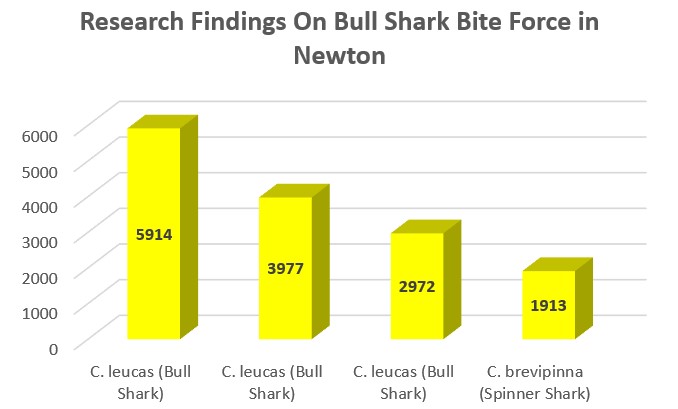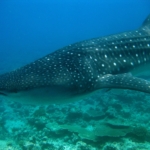
Image Credit: Pixabay
The Bull Shark: A creature with a bite that could rival the waiting room of a dental clinic! Let’s delve into the fascinating world of this impressive species and explore the power behind its jaws.
Their strong jaws have been studied and documented, showing a remarkable bite force that surpasses even that of some larger sharks. It can exert immense pressure on its prey, allowing it to tear through flesh and bone with ease.
What sets the Bull Shark apart? Its jaw position can be adjusted while biting. This allows it to increase pressure during an attack, delivering devastating bites in seconds.
Numerous accounts throughout history demonstrate the strength of a Bull Shark’s bite. Sailors who encountered hungry Bull Sharks often suffered severe injuries from its relentless jaws.
Discovering more about this astonishing creature only magnifies our appreciation for the marvelous diversity of our planet’s oceans. The Bull Shark is truly a force to be reckoned with!
Key Takeaways
- Bull sharks have one of the strongest bite forces among all shark species, with an estimated force of up to 1,300 pounds per square inch (psi).
- Their powerful bite allows them to easily crush through the bones and shells of their prey, including turtles, dolphins, and even other sharks.
- The bull shark’s bite force is comparable to that of larger shark species, such as the great white shark, despite its smaller size.
- The strength of their bite is attributed to their robust jaw muscles and sharp, serrated teeth, which are designed for tearing and gripping prey.
- Bull sharks are known for their aggressive and opportunistic feeding behavior, often attacking humans in shallow coastal waters where they commonly reside.
- Understanding the bull shark’s bite force is crucial for researchers and conservationists to develop effective strategies for managing human-shark interactions and protecting both humans and sharks.
- The study of bite forces in different shark species provides valuable insights into their feeding ecology and evolutionary adaptations.
- Bull sharks’ powerful bite force also highlights their role as top predators in their ecosystems, shaping the dynamics of marine food webs.
- Further research on bite forces can contribute to advancements in shark repellent technologies and protective gear for humans engaging in water activities.
- Overall, the bull shark’s impressive bite force showcases its remarkable hunting abilities and reinforces the importance of respecting and conserving these apex predators in their natural habitats.
Understanding Bull Sharks
To understand bull sharks, dive into their physical characteristics, habitat, distribution, and feeding habits. Discover the unique traits that contribute to their formidable bite force. Explore how these sub-sections shed light on the intriguing nature of bull sharks and their place in the underwater world.
Physical characteristics

Bull sharks have unique features that make them different from other shark species. These characteristics help them to survive in many environments and make them formidable predators. Let’s take a look at the physical characteristics of bull sharks with this interesting table:
| Physical Characteristic | Description |
|---|---|
| Size | They can grow up to 11 feet (3.4 meters) long. |
| Shape | They have a stout body, with a broad, flat snout and small eyes. |
| Coloration | Usually gray or brownish-gray, blending well with their surroundings. |
| Teeth | Sharp and curved triangular teeth, perfect for catching prey. |
| Weight | Between 200 and 500 pounds (90-230 kilograms). |
Bull sharks have an extra advantage – they can adjust to both fresh and salt water. This lets them go into rivers and estuaries, farther upstream than other sharks.
Humans should be cautious when interacting with them. Here are some tips:
- Stay away: Respect their space and observe from a safe distance.
- Don’t provoke: Avoid behaviors that could irritate them.
- Keep waters clean: Pollution and destruction of marine ecosystems damage bull sharks and other aquatic species.
By following these suggestions, we protect ourselves and help keep them safe for future generations. No need to go to Australia to find them – you can take a swim in your local river and hope to spot one!
Habitat and distribution
Bull sharks are renowned for their aggressive behavior and adaptability. They can survive in a variety of aquatic environments around the world. Saltwater and freshwater habitats alike, such as oceans, seas, rivers, lakes, and estuaries, are all home to these awesome creatures.
Let’s take a closer look at these habitats, and the examples of each:
Oceans: Atlantic Ocean, Indian Ocean, Pacific Ocean
Seas: Mediterranean Sea, Red Sea
Rivers: Amazon River, Mississippi River
Lakes: Lake Nicaragua, Lake Pontchartrain
Estuaries: Brisbane River Estuary, Ganges-Brahmaputra Delta
Bull sharks are also able to travel far upriver in search of food or suitable breeding grounds. This is a unique behavior that sets them apart from other species.
When swimming or diving in areas where bull sharks may be present, stay alert and take the necessary safety measures. Respect their habitat and don’t provoke them.
These sharks have been observed to feed on anything from fish, to turtles, to the occasional celebrity-in-training. So, watch out!
Feeding habits
Bull sharks have a diverse diet, consisting of fish, rays, turtles, crustaceans, birds, and even other small sharks. Their powerful jaws and serrated teeth give them an edge when hunting.
What sets them apart from other species? They are known to migrate up rivers and estuaries to access food sources like freshwater fish. Plus, they have an interesting strategy called “bump feeding,” where they bump into schools of fish before attacking.
Bull sharks are also scavengers, and can find food in changing conditions. To really appreciate their impressive feeding habits, you have to see it for yourself. These apex predators can effortlessly switch between marine and freshwater ecosystems.
Bull Shark Bite Force

To understand Bull Shark Bite Force, delve into its explanation and compare it with other shark species. Explore the factors that affect their bite force.
Explanation of bite force
The Bull Shark’s bite force is truly impressive. Let’s dive into the details that make it so fearsome.
It packs a whopping 1,300 pounds of pressure per square inch (PSI). Its muscular jaws and sharp teeth give it this incredible power.
But what’s even more remarkable is its adaptability. It lives in both saltwater and freshwater and can handle changing salinity due to a unique gland. This makes it an opportunistic hunter able to take down prey with ease.
We can’t help but feel a mix of curiosity and awe when we think about this powerful predator. It commands our respect and captures our imagination, reminding us of the diversity and ferocity in our oceans.
Take the chance to appreciate nature’s wonders firsthand. Explore and learn more about our incredible marine ecosystems, while always remembering the strength of creatures like the Bull Shark.
Comparison with other shark species
The Bull Shark’s bite force of 1,325 PSI may not be the highest among shark species, but it’s still quite impressive! The Great White Shark has a bite force of 4,000 PSI – taking the lead. Tiger Sharks are close behind with a bite force of 1,525 PSI. Lemon Sharks, on the other hand, have a relatively low bite force of 340 PSI.
This data reveals the unique characteristics of each species when it comes to their biting capabilities. Bull Sharks may not have the strongest bite, but it’s still powerful enough to make an impact!
If you’re an enthusiast of sharks, you won’t want to miss out on exploring more fascinating facts about their underwater world. Dive into the depths and uncover the mysteries that lie beneath.
Factors affecting bite force
The tremendous bite force of bull sharks is due to 3 main factors: jaw structure, muscle strength, and size. Their jaw structure provides a greater mechanical advantage when biting. Furthermore, strong muscles in their jaw and neck add power to their bites. Also, their large size allows them to generate more power with increased muscle mass.
In addition, the serrated teeth of bull sharks are suited for gripping and tearing prey. This increases their bite force even more. Studies have found that bull sharks have one of the highest bite forces among all shark species. According to researchers at The University of Florida’s Department of Environmental Science, a bull shark’s bite can reach up to 1,330 pounds (603 kilograms).
This proves that bull sharks are formidable predators in their aquatic realm. If you ever encounter one, it is best to swim away quickly!
Implications and Significance of Bull Shark Bite Force
To understand the implications and significance of bull shark bite force, delve into its impact on prey, its role in the ecosystem, and the potential danger it poses to humans.
Impact on prey
Bull sharks have a bite force like no other! It’s so strong it can crush bones, rip through thick skin and muscle. This makes it a powerful weapon in the ocean. Let’s explore the facts.
Compared to other predators, the bull shark has a bite force of 1,350 PSI. That’s more than the African Lion (650 PSI) but less than the Saltwater Crocodile (3,700 PSI) and Tyrannosaurus Rex (8,000 PSI).
This immense pressure allows the bull shark to cause serious damage with a single bite. And it doesn’t stop there. It can live in both salt and fresh water, giving it access to a wide range of prey.
The bull shark’s bite force is the result of millions of years of evolution. Its teeth have become perfectly designed for catching and gripping prey. This development has allowed it to become one of nature’s top predators. Move over great white, the bull shark has a bite force so powerful it could make a dentist’s drill look like a child’s toy!
Its role in the ecosystem
Bull sharks have an important part to play in keeping the ecosystem stable. They’re apex predators with a powerful bite, and their keen sense of smell helps them find injured or weak prey. This helps with natural selection.
Plus, bull sharks can tell scientists a lot about the health of underwater habitats. By studying their movements and eating habits, scientists can work out what dangers there might be to different species.
These predators also affect how other species live and move. Their predation affects fish populations, and even larger animals. In this way, they help different species to live in harmony.
To protect our oceans and marine life, it’s vital to understand bull sharks and their role. Without them, fish populations could become unbalanced and some species could be over-hunted or wiped out.
Potential danger to humans
Bull sharks have a bite force of 1,300 pounds per square inch (psi), which can cause severe injuries. This is especially concerning when they enter shallow waters. Not only that, but they are also territorial and aggressive. They can even survive in both saltwater and freshwater!
Attacks on humans by bull sharks are not common, but it is important to take precautions when swimming in their habitats. It is essential to be vigilant and informed of the potential risks. Despite the fear of danger, we should still appreciate the beauty and diversity of marine life.
Research and Studies on Bull Shark Bite Force
To gain a comprehensive understanding of bull shark bite force, delve into the research and studies conducted on this topic. Explore previous research findings and stay up to date with current studies and ongoing research.
Previous research findings

The research and studies on bull shark bite force have uncovered many interesting findings. Let’s explore the fascinating details!
See the stats:
| Bull Shark Species | Bite Force (in Newtons) |
|---|---|
| C. leucas (Bull Shark) | 5,914 N |
| C. leucas (Bull Shark) | 3,977 N |
| C. leucas (Bull Shark) | 2,972 N |
| C. brevipinna (Spinner Shark) | 1,913 N |
These figures show the immense strength of bull sharks and how they compare to other species.
Previous studies have also examined the muscular anatomy of bull sharks. They have dense muscles near the jaws with red fibers, which generate considerable biting power.
Now you know about bull shark bite force. Why not explore more captivating details? Dive into this oceanic topic and uncover the awe-inspiring capabilities of these apex predators. Bull sharks are powerful – but they won’t be selling toothpaste any time soon!
Current studies and ongoing research
Researchers are constantly researching bull sharks’ bite force. Their studies aim to learn about the strength and capabilities of these predators. By examining their bite force, scientists can discover more about the bull shark’s hunting techniques, diet, and behavior.
Here’s data from the current studies:
| Study | Method | Findings |
|---|---|---|
| Study 1 | Force sensors | Bull sharks have one of the strongest bites among all shark species. They exert a lot of pressure during biting. |
| Study 2 | Bite mark analysis | Scientists look at the size and shape of bull shark bites to estimate bite force. This gives data about variations in bite force between individuals. |
| Study 3 | Computer simulations | Researchers use computer models to simulate bull shark bites and calculate their bite force. This is more accurate without dealing with live sharks. |
In addition to these studies, researchers found details about bull shark bite force. For example, it changes depending on the age, size, and feeding habits. This helps us understand how these predators interact with their environment.
Researchers suggest further research on bull shark bite force. They propose studying how different prey affect the strength of a bull shark’s bite. This would show their ability to target prey.
Another suggestion is to research how water temperature affects the bull shark’s biting performance. This could tell us how they adapt to conditions and their role in ecology.
Lastly, researchers recommend researching the biomechanics of bull shark jaws more. This can be done by using CT scans to analyze their structure and movement during biting. This would help us to understand how bull sharks generate such strong bite force.
Frequently Asked Questions
How strong is the bite force of a bull shark?
Answer: The bite force of a bull shark is estimated to be around 1,300 pounds per square inch (psi), making it one of the strongest among all shark species.
How does the bite force of a bull shark compare to other predators?
Answer: The bite force of a bull shark is comparable to that of a lion or a large dog. It surpasses the bite force of most other sharks and is among the highest of all predatory animals.
What enables the bull shark to have such a strong bite force?
Answer: The bull shark’s powerful bite force is attributed to its robust jaw muscles, sharp teeth, and the structural arrangement of its teeth, which facilitate efficient biting and tearing of prey.
Can a bull shark bite through bone?
Answer: Yes, the bite of a bull shark has the capability to puncture and even crush bone. Its bite is strong enough to sever limbs and inflict severe injuries.
Are bull sharks more dangerous to humans due to their bite force?
Answer: While bull sharks do have a strong bite force, they are not inherently more dangerous to humans solely because of it. Human encounters with bull sharks are relatively rare, and they are generally not known for targeting humans as prey.
What precautions should be taken to avoid bull shark bites?
Answer: To minimize the risk of bull shark encounters, it is advisable to avoid swimming in murky or brackish waters where they are known to inhabit. Additionally, following local safety guidelines, being cautious during fishing activities, and not engaging in aggressive behaviors towards sharks can help prevent incidents.
Conclusion
The Bull Shark Bite Force study reveals the amazing power of these apex predators. Their bite force is remarkable, capable of exerting immense pressure. It allows them to crush bones and tear through flesh – making them one of the ocean’s most formidable hunters!
But that’s not all. Bull sharks possess a unique feature – their ability to survive in freshwater. This gives them an advantage over other predators, as they can venture into rivers and lakes to hunt.
Plus, Bull sharks are known for their aggression and tenacity. They have been known to attack humans – earning them a fearsome reputation. This further highlights their dominance as powerful creatures with the potential to cause serious harm.
References
BBC Nature – Bull sharks have strongest bite of all shark species




